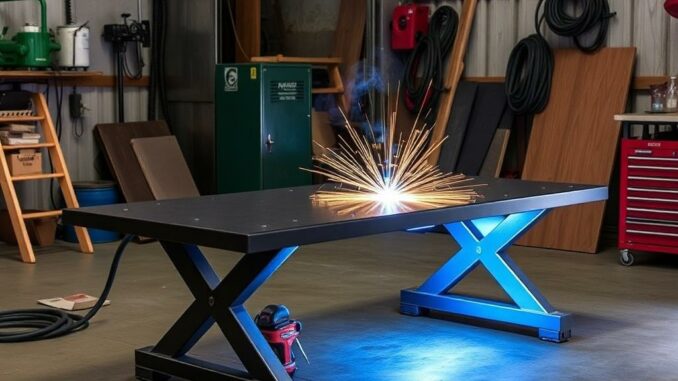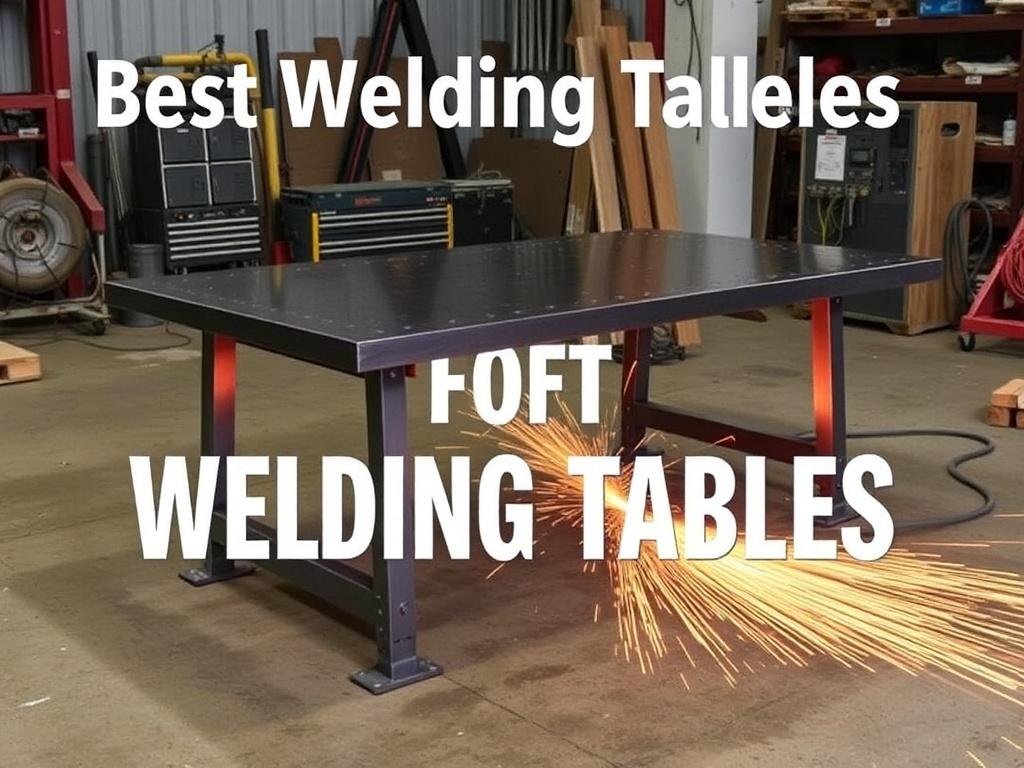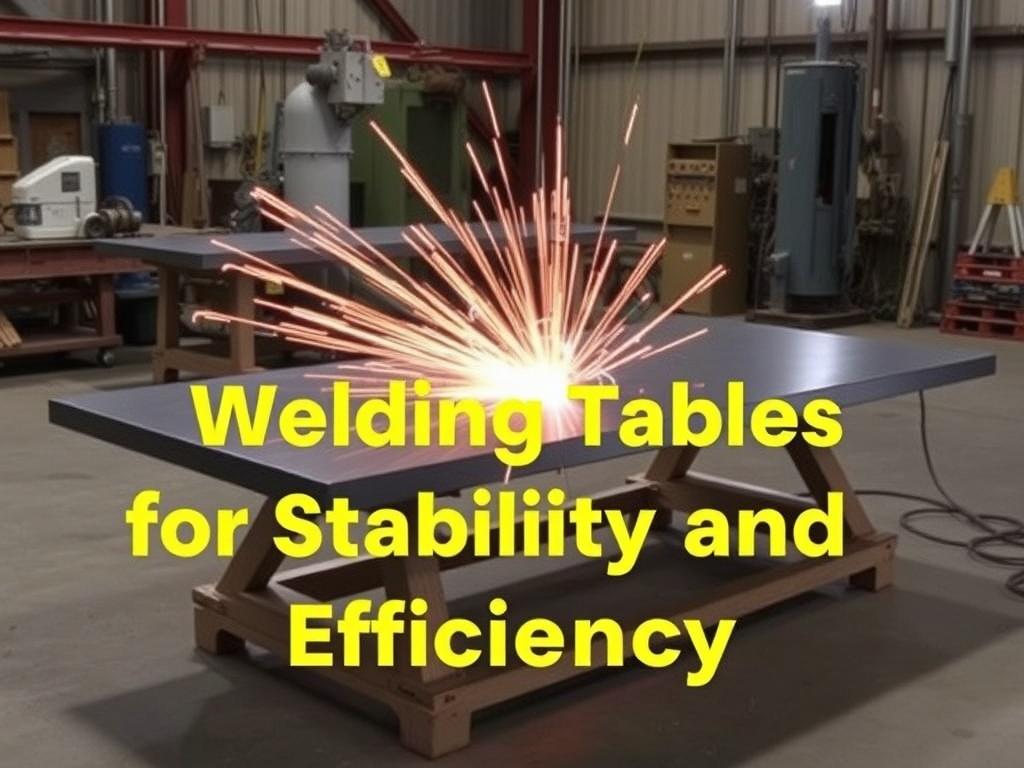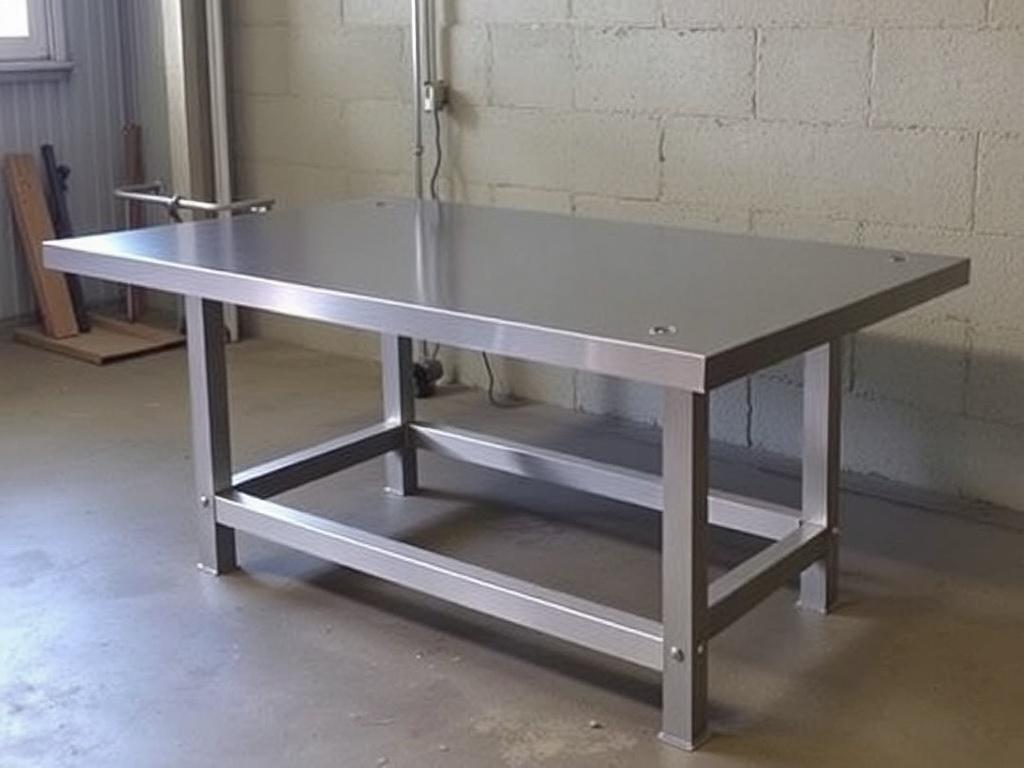
Whether you are a professional welder or a passionate hobbyist, having the best welding table is essential to achieve stability and efficiency in your projects. Welding demands precision, safety, and convenience; all of which are highly influenced by the work surface you use. But with so many options available in the market, how do you know which welding table is right for you? In this comprehensive guide, we’ll explore everything you need to know about welding tables, including the critical features, types, materials, and top models that combine stability and efficiency.
This article is designed to serve as your one-stop solution, providing detailed insights into best welding tables for stability and efficiency, while naturally incorporating helpful keyword phrases like “welding tables,” “welding table stability,” “efficient welding surfaces,” and others throughout the content. Let’s dive into the world of welding tables and discover how to elevate your workmanship with the perfect foundation.
Why Stability and Efficiency Are Crucial in Welding Tables

Before jumping into specific tables and features, it’s important to understand why stability and efficiency in welding tables matter so much. When you’re welding, a steady work surface ensures that your materials don’t shift or wobble, which directly affects the accuracy and quality of your welds. Any minor movement during welding can lead to weak joints, misalignments, and safety hazards.
Efficiency, on the other hand, relates to how the design and features of a welding table can speed up your work process. Imagine having clamps, slots, and adjustable parts that let you position your workpieces just right, without fumbling with makeshift tools or constantly readjusting. This doesn’t just save time — it enhances the quality of each weld, reduces fatigue, and minimizes errors.
Combined, stability and efficiency create a work environment that boosts your confidence, helps you focus on your craft, and delivers professional-grade results time after time. Whether you are involved in automotive repairs, industrial fabrication, or artistic metalwork, choosing a welding table that excels in these two areas is critical to your success.
Key Benefits of Having a High-Quality Welding Table
- Improved Weld Quality: Steady tables make it easier to maintain consistent bead patterns.
- Better Safety: A solid table reduces the risk of accidents caused by unstable workpieces.
- Increased Productivity: Efficient layouts and features let you complete jobs faster.
- Versatile Use: Modern welding tables accommodate various materials and welding types.
- Durability: Well-built tables last longer even under heavy use and harsh conditions.
- Ergonomics: Correct table height and design reduce strain and fatigue during long weld sessions.
Types of Welding Tables: What Works Best for Your Needs?
Welding tables come in a variety of forms, each designed to cater to different tasks, skill levels, and environments. Understanding the types of welding tables available helps you match the tool to your specific requirements. The main categories include fixed welding tables, portable welding tables, adjustable height tables, and modular tables.
Fixed Welding Tables
Fixed welding tables are solid, heavy-duty surfaces that provide unmatched stability. They are usually made of thick steel plates mounted on sturdy legs or frames. These tables are ideal for workshops where a permanent station is needed, and movement is minimal.
Pros:
- Exceptional stability and durability
- Can support heavy materials
- Often come with built-in holes and slots for clamps
Cons:
- Not easily portable
- Takes up significant floor space
Portable Welding Tables
For welders who need mobility, portable welding tables offer a lightweight, foldable design. They tend to be smaller and may compromise slightly on stability, but great models balance portability with efficiency features.
Pros:
- Easy to transport and store
- Great for job sites and small workshops
- Often adjustable for different heights or angles
Cons:
- Less weight support
- May not be as stable as fixed tables
Adjustable Height Welding Tables
Ergonomics play a big role in welding efficiency. Adjustable height tables allow you to set the working surface at the perfect level for your body, reducing strain and improving precision. These systems often come with crank handles, pneumatic lifts, or motorized adjustments.
Pros:
- Improves comfort and reduces fatigue
- Suitable for various welding positions
- Can be used by multiple operators at different heights
Cons:
- Usually more expensive
- Sometimes less rigid than fixed models
Modular Welding Tables
Modular welding tables offer the ultimate flexibility by combining the advantages of various designs. These feature removable top plates, interchangeable components like clamps and fixtures, and compatible accessories that let you customize the workspace for specific tasks.
Pros:
- Highly customizable to task needs
- Great for repetitive or varied welds
- Often include precision ground surfaces and measuring aids
Cons:
- Generally pricey
- Takes time to set up and adjust
Essential Features to Look for in the Best Welding Tables
Choosing the best welding table for stability and efficiency involves evaluating numerous features. Below is a breakdown of must-have characteristics and why they matter to welders:
| Feature | Description | Benefit |
|---|---|---|
| Tabletop Material | Usually made from steel or cast iron with a flat, smooth surface. | Ensures durability and provides a stable, heat-resistant surface for welding tasks. |
| Thickness of Tabletop | Heavier gauge steel or iron (usually from 6mm to 12mm). | Offers less vibration, better stability, and can withstand heavy workpieces. |
| Legs and Frame Construction | Steel tubular frames or solid uprights. | Contributes to overall stability and supports weight evenly. |
| Clamping Slots and Holes | Slots or grid patterns in the tabletop for attaching clamps and fixtures. | Allows fixed positioning and enhances efficiency during welding projects. |
| Adjustability | Height adjustable legs or tilting tops. | Improves operator comfort and enables a variety of welding angles. |
| Portability Features | Foldable frames or wheels for easy movement. | Makes the table convenient for transport and multi-location use. |
| Accessory Compatibility | Ability to add shelves, exhaust clamps, or magnets. | Enhances workflow efficiency and organization. |
| Finish and Coating | Protective finishes like powder coating or anti-rust paint. | Extends table life and reduces maintenance. |
Materials Used in Welding Tables: Durability and Performance

The materials used to construct welding tables are pivotal in determining not only the durability but also the performance of the table itself. Let’s explore the common materials and what each brings to the table.
Steel
Steel is the most common material used for welding tabletops and frames. Its strength and heat resistance make it perfect for handling the stresses of welding. Typically, a steel tabletop is made from thick plate steel which resists warping and can withstand high temperatures and repeated impacts.
Steel is also easy to machine, so manufacturers often add slots and holes for clamps right into the tabletop. Powder-coated finishes further protect steel from rust and prolong service life.
Cast Iron
Cast iron is prized for its exceptional flatness and stability. It is commonly found in high-end or professional welding tables. Because cast iron is denser than steel, it absorbs vibrations better, providing a less shaky welding experience. However, cast iron tables are heavy and less portable.
Aluminum
Though rarer, aluminum is sometimes used for frames or portable tables because of its lightweight attributes. However, aluminum can’t withstand heat and abuse as well as steel or cast iron, so it’s recommended only for light-duty or hobby applications.
Choosing the right material depends on your intended use, budget, and the scale of your welding projects. For most situations, thick steel plates represent the perfect balance of strength, heat resistance, and cost-effectiveness.
Top Brands Offering the Best Welding Tables for Stability and Efficiency
The marketplace offers a wide range of welding tables from various manufacturers. Here’s a look at some top brands renowned for creating stable and efficient welding tables:
| Brand | Special Features | Best for | Available Models |
|---|---|---|---|
| Strong Hand Tools | Modular t-slot tables with precision flatness and extensive clamp accessories | Professional welders and fabrication shops | Strong Hand MT Series, Wizard Welding Tables |
| Weldtable | Heavy-duty, solid steel tables with optional ventilated designs | Auto body technicians, heavy fabrication | Weldtable Pro Series |
| Bench Dog | Portable and foldable work tables with steel tops and quick adjust systems | Hobbyists and small workshop users | Bench Dog Pro Tables |
| Kaka Industrial | Affordable steel tables with adjustable height options and integrated clamping slots | Entry-level welders and DIY enthusiasts | Kaka Adjustable Welding Table Range |
| Baileigh Industrial | Commercial-grade welding tables with thick tabletops and heavy leg frames | Industrial workshops and heavy-duty use | Baileigh WT Series |
How to Set Up Your Welding Table for Maximum Stability
Purchasing the best welding table is only the first step—setting it up correctly is equally important to maximize stability and efficiency. Here are practical tips to help you establish a safe, solid workspace:
1. Position on a Level Surface
Ensure the floor where you place your welding table is flat and stable. Uneven ground causes wobbling that can compromise your weld quality. If you have uneven flooring, use leveling feet or shims to balance the table perfectly.
2. Use Anchoring When Possible
If your table design allows, secure the legs to the floor or wall using brackets or anchors, especially in high-vibration environments. This adds an extra layer of stability, reducing any movement entirely.
3. Select Proper Clamps and Fixtures
Use quality clamps designed specifically for welding tables that fit into the slots and holes of your tabletop. Proper clamping prevents workpieces from shifting while cutting or welding.
4. Maintain a Clean Surface
Welding debris, slag, and dust can create uneven contact points that affect stability. Regularly clean your table surface to preserve flatness and ensure your work rests flat on the tabletop.
5. Organize Accessories Efficiently
Keep your frequently used tools, clamps, and safety gear within arm’s reach by installing shelves or magnetic holders close to your welding table. This minimizes time wasted searching and movement away from your post.
Maintaining and Caring for Your Welding Table

Proper maintenance extends the life of your welding table and keeps it functioning with maximum stability and efficiency. Follow these pointers:
- Clean Regularly: Remove metal filings, slag, and dust from the tabletop and frame.
- Inspect for Damage: Check for warping, cracks, or loosened bolts and perform repairs promptly.
- Keep it Rust-Free: Apply anti-rust sprays or coatings on steel tables, especially if stored in humid environments.
- Lubricate Moving Parts: If your table has adjustable components, keep the mechanisms clean and lubricated for smooth operation.
- Proper Storage: For portable tables, store folded or covered to avoid unnecessary wear when not in use.
Conclusion: Investing in the Best Welding Tables Elevates Your Craft
In the demanding field of welding, the foundation you build upon greatly influences your success. Choosing the best welding tables for stability and efficiency creates a safer, more productive welding environment where precision and quality thrive. Whether you prefer the rugged permanence of fixed steel tables, the flexibility of modular designs, or the convenience of portable models, there is a perfect welding table out there to meet your needs.
Remember to evaluate key features like tabletop materials, thickness, adjustability, and clamping options while factoring in your specific working conditions and budget. The best welding table is more than just a work surface — it’s an essential partner in your fabrication journey.
Take your time to research, invest smartly, and maintain your table properly, and your welding workspace will support your projects with stability and efficiency for years to come.
Ready to find your ideal welding table? Explore trusted brands and models, consider your project demands, and upgrade your workshop today to weld with confidence and unmatched quality.
